Croatia E-commerce Market Size
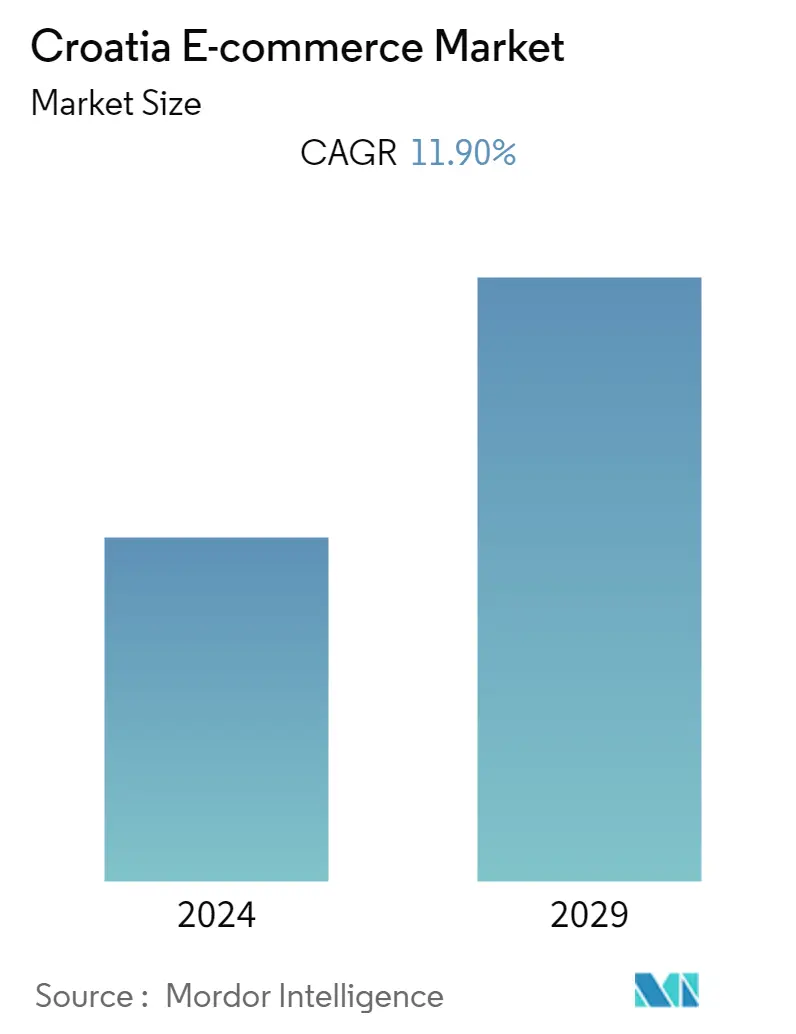
| Study Period | 2019 - 2029 |
| Base Year For Estimation | 2023 |
| Forecast Data Period | 2024 - 2029 |
| Historical Data Period | 2019 - 2022 |
| CAGR | 11.90 % |
| Market Concentration | High |
Major Players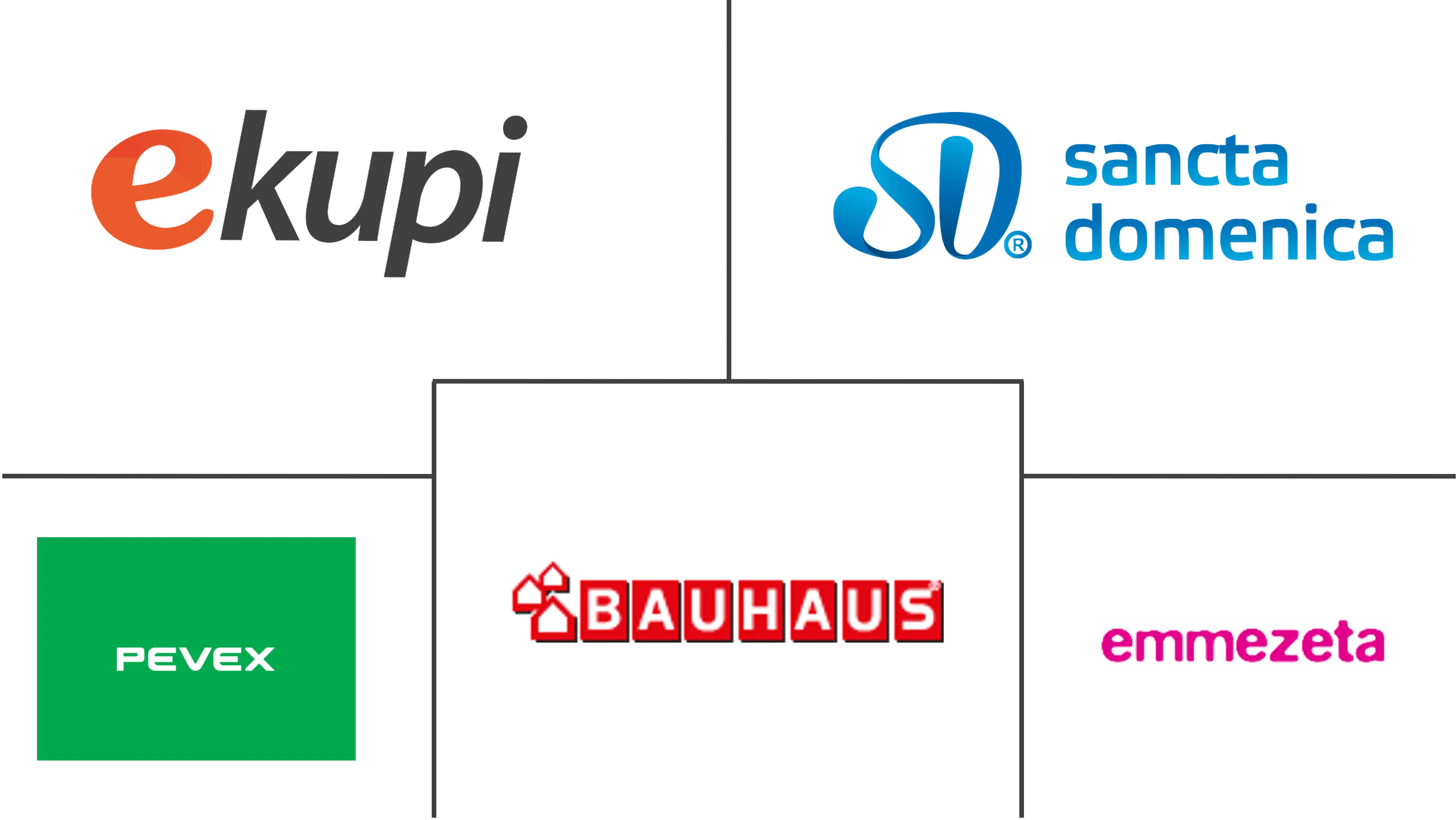
*Disclaimer: Major Players sorted in no particular order |
Croatia E-commerce Market Analysis
The Croatia E-commerce market is expected to grow at a CAGR of 11.9% over the forecast period from 2022 to 2027. The European E-Commerce market has been recording robust growth over the last few years, thereby offering exciting opportunities for online retailers across various sectors. However, Croatia is still considered to be maturing market for e-commerce with hopes of higher penetration rates over the forecasted period.
- Croatian e-commerce has grown since the country joined the EU in 2013. Because businesses have already created e-commerce platforms and users are now comfortable with the notion, the COVID-19 pandemic is expected to push increased use of E-commerce.
- According to the International Trade Administration, a significant share of Croatian internet buyers buy from stores located outside of the country, primarily in China and the EU. Media and electronics is the market's largest segment, with a market value of USD 208.0 million in 2020. Clothing, shoes, fashion accessories, and food are all available for purchase online. About 40% of Croatian online shops cater solely to the Croatian market, while the remaining 40% cater to international customers.
- Moreover, the country is witnessing a constant rise in E-commerce sales. New markets are forming, and established markets have the potential for growth even more. Over the next few years, global growth is expected to continue, with Croatia contributing and aiding the same.
- With the introduction of the EU Digital Single Market Strategy, Croatia people will have complete access to all goods and services offered online by EU enterprises. Payments, customer rights, and privacy policies are all covered under the Strategy. According to the Digital Economy and Society Index (DESI) report for 2021, the country ranked 19th of 27 EU Member States. Online shopping is heavily promoted in the media, which is expected to drive the growth of the market in the country.
Croatia E-commerce Market Trends
This section covers the major market trends shaping the Croatia E-commerce Market according to our research experts:
Smart Phones and Social Media users holds the highest share in Online Shopping
- The majority of young people in Croatia use smartphones to access the internet, and smartphones are likely to be the most popular device for making online purchases. Native advertising, or adverts that blend in with the content and design of a website, is becoming increasingly popular. Further, several Croatian enterprises can be noted to promote via e-mail, while others indulge in leveraging Facebook to advertise products.
- Popular social networking platform in the country include the likes of Facebook and Instagram, which has facilitated the marketing of various products and aided the growth of the studied market. Politicians and journalists in the country can be noted to be actively using Twitter. YouTube has also gained significant traction, which has allowed enterprises to bring their products to the users.
- Nonetheless, the COVID-19 pandemic in Croatia greatly benefitted mobile e-commerce in 2020. This increase is largely due to the younger generation's preference for conducting transactions on their mobile devices. Furthermore, the rising use of smartphones and social media has bolstered the country's E-commerce market demand.
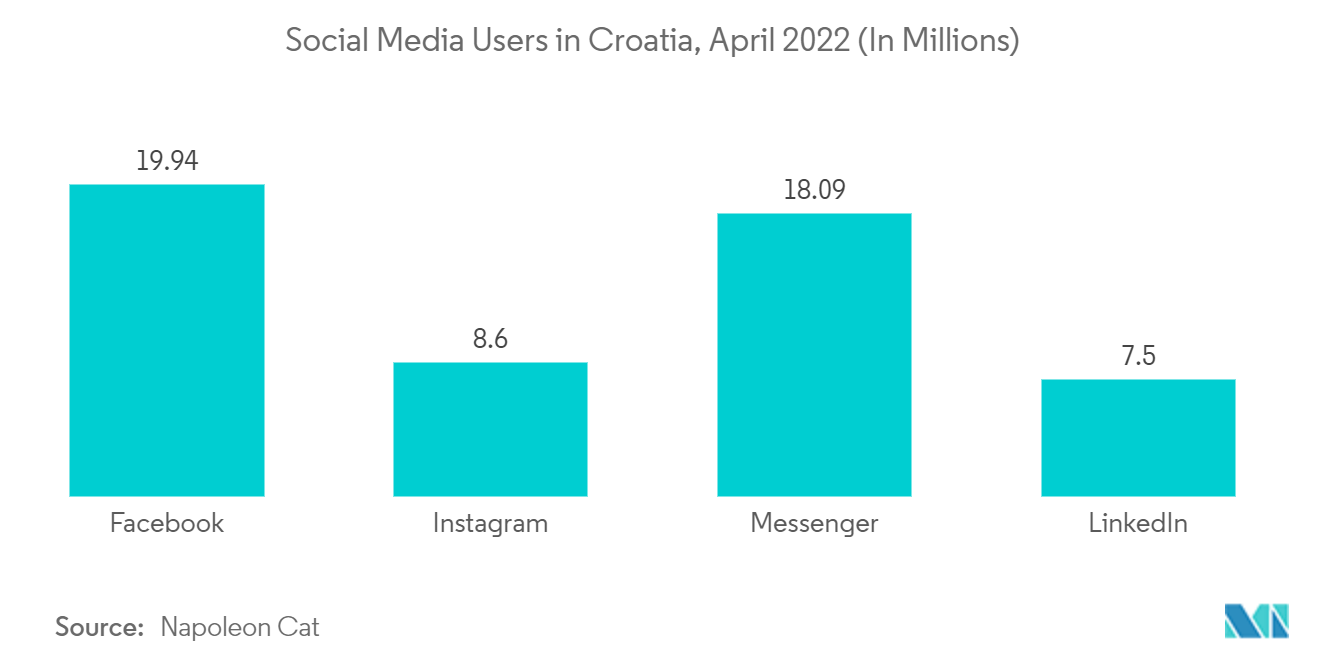
Fashion will lead the overall E-commerce market in Croatia
- Even though conventional out-of-home fell in 2020, a rebound in revenue is expected to continue in 2022 as people resume their normal outdoor activities. In the coming years, digital out-of-home advertising (DOOH) and developing programmatic OOH advertising technologies are projected to increase even more.
- Some of the leading online fashion stores are Asos, Zalando, Nordstrom, or specific category shops are the key sales channels in this market area eBags, zara.com, clarks.com, samsonite.com. These are some of the domestic and international fashion e-commerce websites that offer several kinds of apparel and luxury clothes throughout Croatia. These internet retailers have created huge demand amongst Croatian consumers.
- Since July 2021, ASOS and Zalando have only lately expanded their network to Croatia. This has already proven to be a trustworthy supplier for all of the customers' wardrobe needs, and they also offer free 30-day returns on all orders. This has expanded its presence on e-commerce platforms across Croatia.
- Furthermore, Amazon, eBay, and AliExpress are the most popular foreign E-commerce platforms in Croatia, offering a wide range of products as well as clothes and accessories. These companies expanded their business by catering to the fashion industry. However, eKupi, Mall, Zuti klik, and Abrakadabra are some of the most well-known domestic fashion e-commerce sites, while PinkPanda is Croatia's fastest-growing online cosmetics retailer.
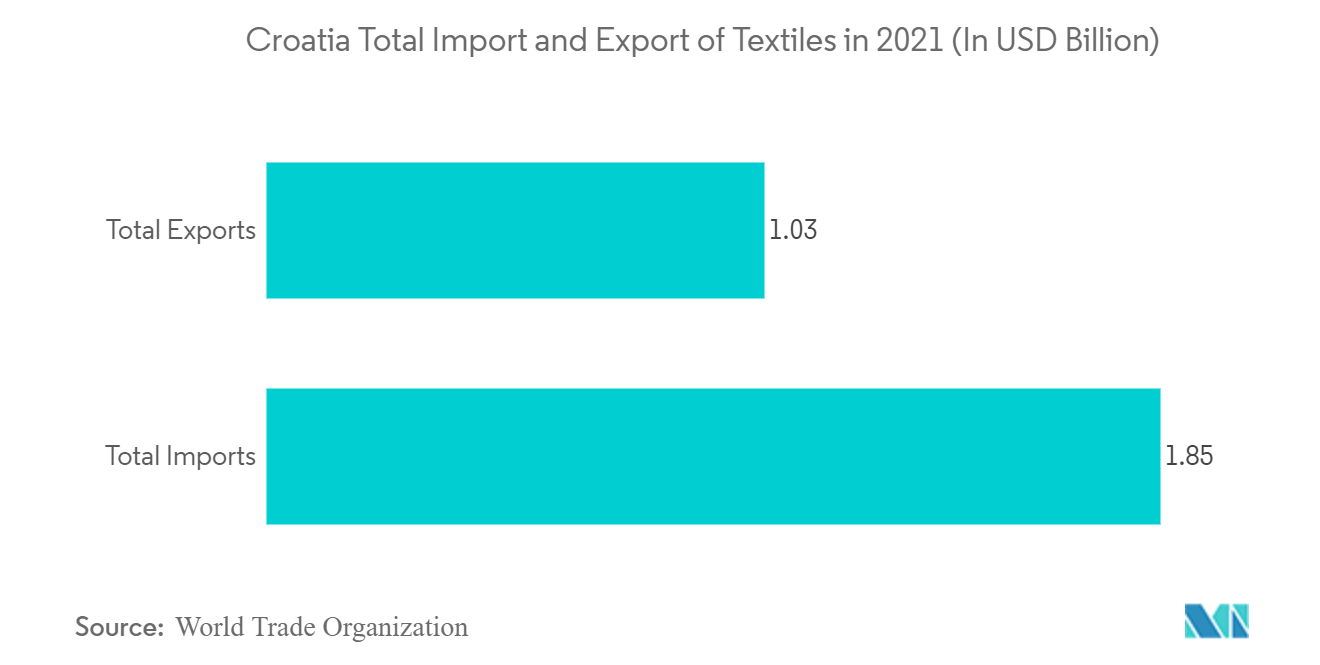
Croatia E-commerce Industry Overview
Amazon, eBay, and AliExpress are the most popular international E-commerce platforms in Croatia. The largest local sites are eKupi (Croatian platform similar to Amazon), Emmezeta (furniture store), and Konzum (grocery store). Mall, Zuti klik, and Abrakadabra are also popular eCommerce platforms, while the currently fastest growing online store is PinkPanda (cosmetics).
- November 2021 - eKupi (eBuy), Croatia's largest domestic online firm, has reached a new milestone in the fast-growing field of Croatian e-commerce. In 2020, firm sales for the M SAN Group climbed by 25.9% to HRK 50 million, or HRK 374.3 million. In addition, it earned HRK 4.5 million in profit. eKupi aims to become one of the region's leading e-commerce players.
- November 2021 - Croatia's largest domestic distributor and second-largest firm, Orbico Group (previously Agrokor), has entered the e-commerce industry. Orbico's web perfumery FABUspot, which was launched in 2021, has already finished third in the Web Retailer Award 2021, the largest e-commerce competition in the Adriatic region. Moreover, the company will target to increase its reach in the near future.
Croatia E-commerce Market Leaders
-
Ekupi d.o.o
-
Bauhaus.hr
-
Pevex.hr
-
Sancta Domenica d.o.o.
-
Fliba d.o.o.
*Disclaimer: Major Players sorted in no particular order
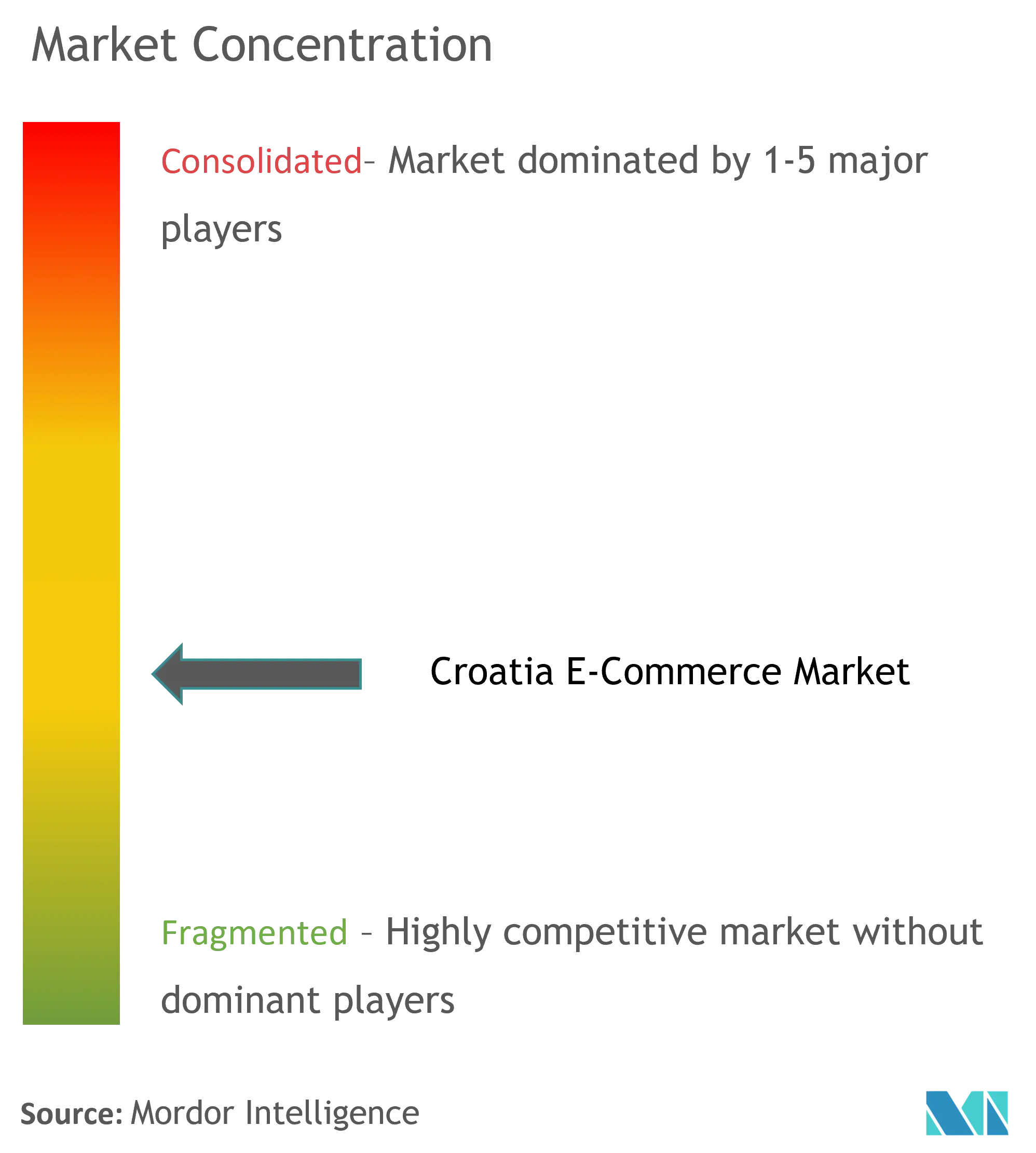
Croatia E-commerce Market News
- May 2022 - The Croatian KupiMe platform, which is known for being the country's first of its kind and is primarily focused on group shopping and coupon sales, has recently invested significant funds in business expansion and the development of specialised software for online shopping (e-commerce). The Croatian KupiMe platform opted to expand its business into the fast-growing e-commerce sector, leveraging its many years of experience in the coupon sales market.
Croatia E-commerce Market Report - Table of Contents
1. INTRODUCTION
- 1.1 Study Assumptions and Market Definition
- 1.2 Scope of the Study
2. RESEARCH METHODOLOGY
3. EXECUTIVE SUMMARY
4. MARKET INSIGHTS
- 4.1 Market Overview
-
4.2 Industry Attractiveness-Porter's Five Forces Analysis
- 4.2.1 Bargaining Power of Suppliers
- 4.2.2 Bargaining Power of Buyers/Consumers
- 4.2.3 Threat of New Entrants
- 4.2.4 Threat of Substitute Products
- 4.2.5 Intensity of Competitive Rivalry
- 4.3 Key market trends and share of E-Commerce of Total Retail sector
- 4.4 Impact of COVID-19 on the E-Commerce sales
5. MARKET DYNAMICS
-
5.1 Market Drivers
- 5.1.1 Rise in trustworthiness of online stores
- 5.1.2 Croatia people appreciate local brands and support local entrepreneurs
-
5.2 Market Challenges
- 5.2.1 Resilience from older generations and lack of internet challenges the expansion of e-commerce
- 5.3 Analysis of key demographic trends and patterns related to the E-Commerce industry in Croatia (Coverage to include Population, Internet Penetration, E-CommercePenetration, Age & Income etc.)
- 5.4 Analysis of the key modes of transaction in the E-Commerceindustry in Croatia (coverage to include prevalent modes of payment such as cash, card, bank transfer, wallets, etc.)
- 5.5 Analysis of cross-border E-Commerceindustry in Croatia (Current market value of cross-border & key trends)
- 5.6 Current positioning of Croatia in the E-Commerceindustry in Europe
6. MARKET SEGMENTATION
-
6.1 By B2C E-Commerce
- 6.1.1 Market size (GMV) for the period of 2017-2027
- 6.1.2 Market Segmentation - By Application
- 6.1.2.1 Beauty & Personal Care
- 6.1.2.2 Consumer Electronics
- 6.1.2.3 Fashion & Apparel
- 6.1.2.4 Food & Beverage
- 6.1.2.5 Furniture & Home
- 6.1.2.6 Others (Toys, DIY, Media, etc.)
-
6.2 By B2B E-Commerce
- 6.2.1 Market size for the period of 2017-2027
7. COMPETITIVE LANDSCAPE
-
7.1 Company Profiles
- 7.1.1 Ekupi d.o.o
- 7.1.2 Bauhaus.hr
- 7.1.3 Pevex.hr
- 7.1.4 Sancta Domenica d.o.o.
- 7.1.5 Fliba d.o.o.
- 7.1.6 Notino s.r.o.
- 7.1.7 Prati Me d.o.o.
- 7.1.8 Instar Informatika d.o.o.
- 7.1.9 Sensus Grupa d.o.o.
- 7.1.10 Emmezeta
- *List Not Exhaustive
8. INVESTMENT ANALYSIS
9. FUTURE OUTLOOK OF THE MARKET
** Subject To AvailablityCroatia E-commerce Industry Segmentation
Conducting an e-commerce business means fostering relationships and selling information, services, and goods over computer communication networks. E-commerce usually refers to trading goods and services over the internet, which means broader economic activity. E-commerce consists of B2B and B2C and internal organizational transactions that support these activities.
The study also tracks the key market parameters, underlying growth influencers, and major vendors operating in the industry, which supports the market estimations and growth rates over the forecast period in Croatia. The study further analyzes the overall impact of COVID-19 on the ecosystem. The scope of the report encompasses market sizing and forecast for segmentation by B2B and B2C, in which the B2C channel is further segmented by application.
| By B2C E-Commerce | Market size (GMV) for the period of 2017-2027 | |
| Market Segmentation - By Application | Beauty & Personal Care | |
| Consumer Electronics | ||
| Fashion & Apparel | ||
| Food & Beverage | ||
| Furniture & Home | ||
| Others (Toys, DIY, Media, etc.) | ||
| By B2B E-Commerce | Market size for the period of 2017-2027 |
Croatia E-commerce Market Research FAQs
What is the current Croatia E-commerce Market size?
The Croatia E-commerce Market is projected to register a CAGR of 11.90% during the forecast period (2024-2029)
Who are the key players in Croatia E-commerce Market?
Ekupi d.o.o, Bauhaus.hr, Pevex.hr, Sancta Domenica d.o.o. and Fliba d.o.o. are the major companies operating in the Croatia E-commerce Market.
What years does this Croatia E-commerce Market cover?
The report covers the Croatia E-commerce Market historical market size for years: 2019, 2020, 2021, 2022 and 2023. The report also forecasts the Croatia E-commerce Market size for years: 2024, 2025, 2026, 2027, 2028 and 2029.
Croatia E-commerce Industry Report
Statistics for the 2024 Croatia E-commerce market share, size and revenue growth rate, created by Mordor Intelligence™ Industry Reports. Croatia E-commerce analysis includes a market forecast outlook 2029 and historical overview. Get a sample of this industry analysis as a free report PDF download.



